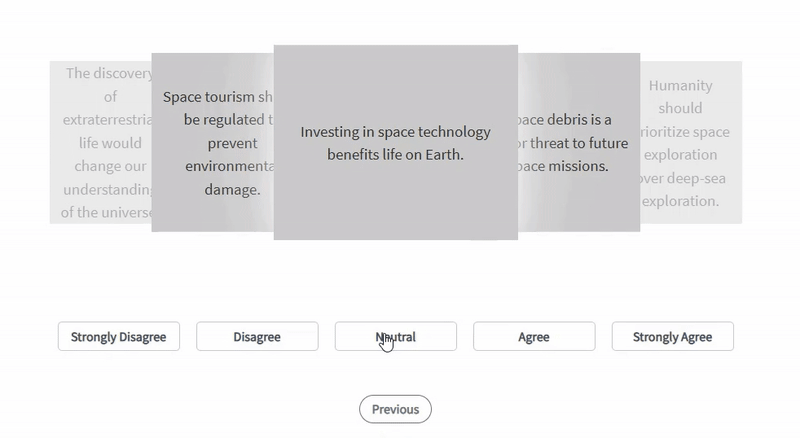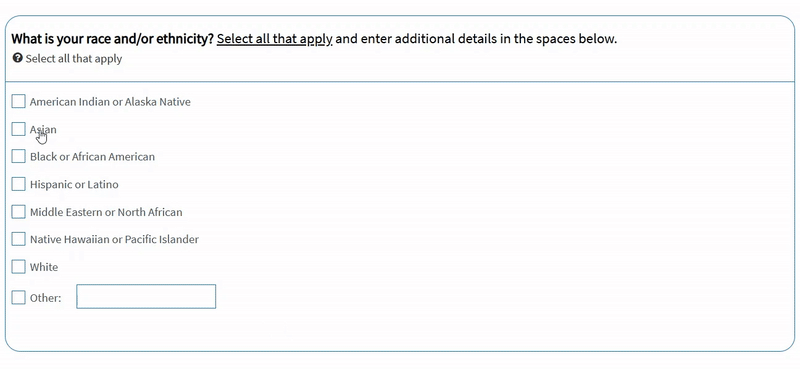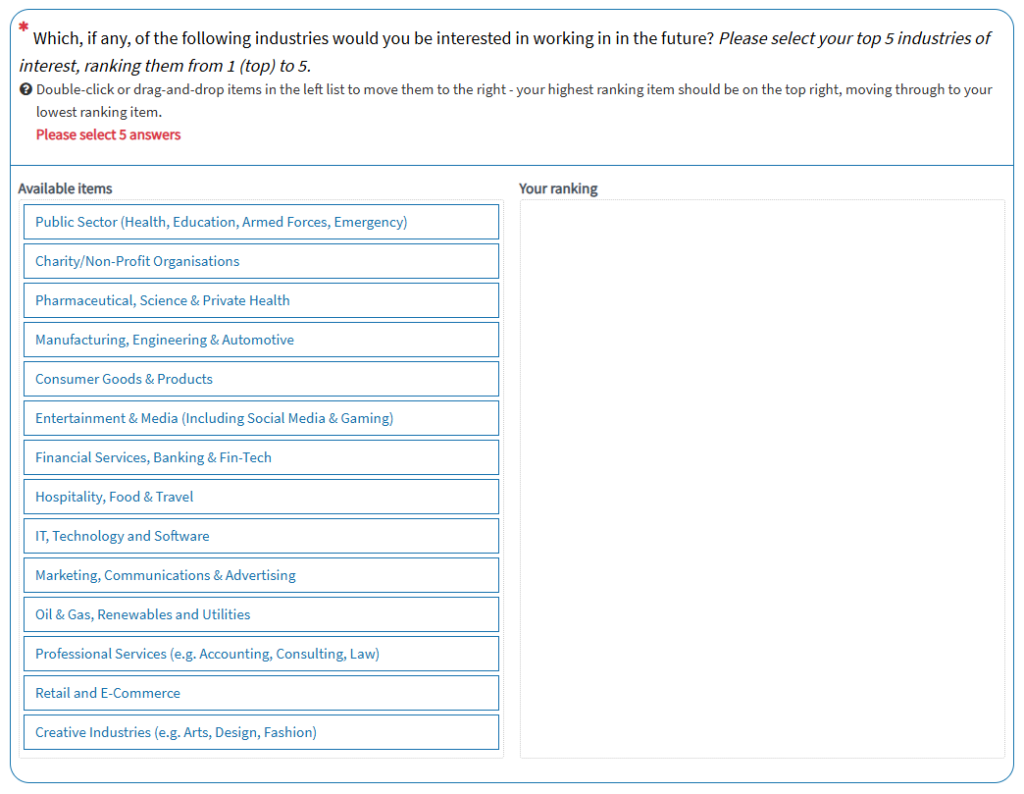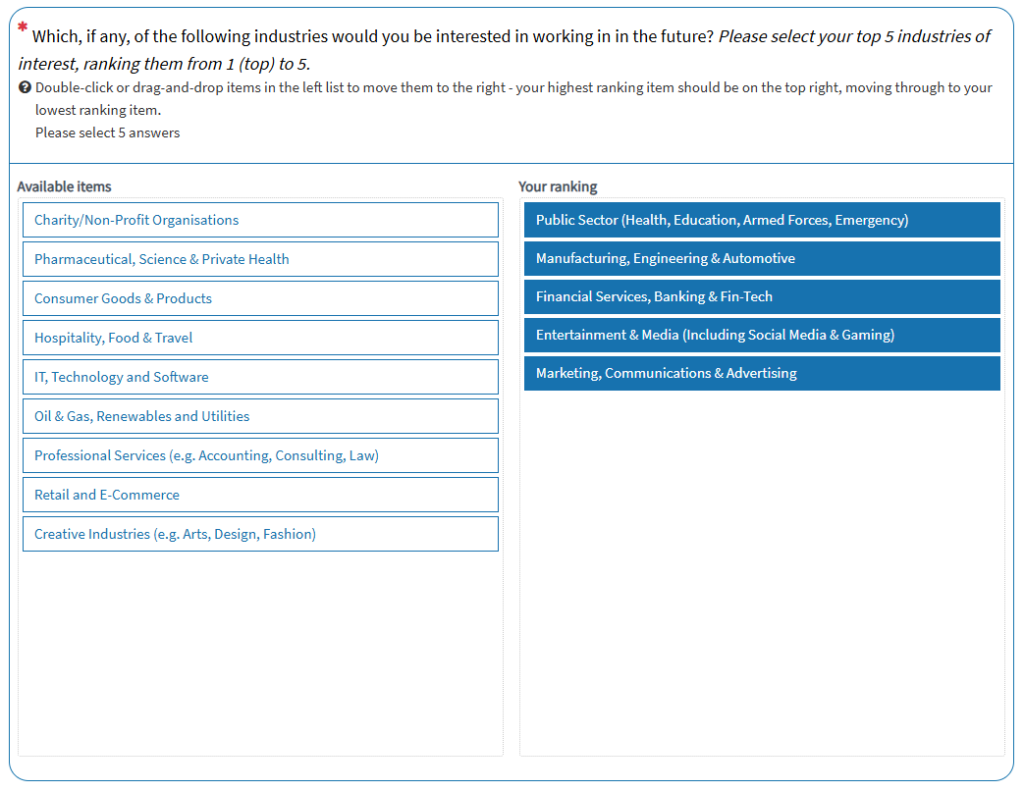At Survey Consulting, we specialize in delivering customize LimeSurvey solutions that extend the functionality and performance of your surveys.
With our expertise in JavaScript, CSS, and HTML we bring your specific requirements to life – from interactive elements to complex logic systems.
What We Can Develop:
- Custom interactive LimeSurvey question types (e.g., dynamic sliders, interactive maps, drag-and-drop fields)
- Advanced validation rules and dynamic response behavior
- Real-time calculations within your LimeSurvey surveys
- Unique respondent experiences through tailored visual and functional features
- Various integrations with external systems (e.g., CRM, reporting tools)
Why Custom Code Matters:
- Tailors the survey experience precisely to your goals
- Increases respondent engagement
- Supports complex research designs
- Enhances data quality through smarter inputs
See Our Work:
Explore selected examples of our custom coded LimeSurvey solutions, including screenshots, demos, and case studies.
Carousel LimeSurvey Question Theme
The custom coded LimeSurvey carousel setup provides an interactive and visually intuitive way to present multiple options. Designed with responsive behavior and clear navigation, it keeps users focused on the central item while offering smooth transitions and improved content comparison across devices.

Here’s how it works:
- A custom carousel was created using jQuery to display one item prominently while partially revealing adjacent items for context.
- It allows respondents to navigate through content in an engaging and structured manner.
- The centered item is visually highlighted to draw attention and support accurate selection.
- This layout minimizes visual clutter and enhances the ability to compare items effectively.
- The carousel’s transitions and interaction logic are optimized for responsiveness and cross-device accessibility.
Dynamic Follow-Up Display for Multiple Choice Options:
One of the mostly used custom coded LimeSurvey solutions is our dynamic multi choice question. It enhances multiple-choice questions by dynamically revealing follow-up sub-options directly beneath each selected choice. It creates a more intuitive and context-driven experience, allowing respondents to provide detailed input without disrupting the survey flow.

Here’s how it works:
- This setup customizes a multiple-choice question to display follow-up sub-options directly beneath each selected checkbox.
- When a respondent selects an option (e.g., a race or ethnicity), the related sub-question appears immediately below it within the same list item.
- jQuery is used to dynamically insert the associated follow-up content (e.g., detailed ethnicities) directly after its parent checkbox.
- This approach maintains contextual relevance and improves the user experience by avoiding separation between main and sub-questions.
- The solution ensures a more intuitive layout and enhances visual clarity during respondent input.
Least Fill Setup
Simple Least Fill:
The Least Fill Setup intelligently directs respondents based on real-time quota needs, ensuring balanced group participation. By dynamically evaluating shortfalls across categories, this approach enhances data quality while maintaining a seamless and unbiased user experience.
Here’s how it works:
- This setup dynamically selects an option based on which category has the highest remaining target completion.
- Percent shortfall is calculated for each category and displayed in a comparison table.
- The script identifies the category with the highest shortfall percentage and selects its corresponding option.
- If multiple categories have the same shortfall, the script randomly selects one from them.
- This ensures balanced participation across groups while maintaining a randomized experience.
Advanced Least Fill Setup:
The Advanced Least Fill Setup refines targeting by analyzing real-time user selections and highlighting underrepresented choices. This adaptive logic dynamically routes respondents toward less frequently selected options, ensuring balanced insights from diverse perspectives while preserving user relevance.
Here’s how it works:
- Participants are prompted to choose multiple options (e.g., top 5 preferences) from a larger predefined list.
- Custom JavaScript is used to record and temporarily store the user’s selected options for further evaluation.
- The system calculates how frequently each selected option has been chosen by all respondents up to that point, using JavaScript logic and locally or remotely stored tracking data.
- From the user’s selected list, the script identifies the least selected (least filled) subset — commonly the bottom 3 options based on cumulative frequency.
- These least-selected options are captured internally (not shown to the respondent during this step) and made available for use anywhere in the survey. They can be dynamically inserted into follow-up questions or referenced later to collect more focused data on underrepresented preferences.
- This methodology ensures that underrepresented areas receive focused attention, resulting in more balanced and comprehensive insights.


A predefined list in which respondents have to select 5 options according to their interests.
When respondents select 5 options, those 5 options are internally captured using JavaScript.

Among the 5 selected options, the 3 that are least chosen by respondents are captured separately for deeper insights through a short free-text input.
Looking for Your Own Customize LimeSurvey Solutions?
Let’s discuss how we can build a solution that’s as unique as your project.
